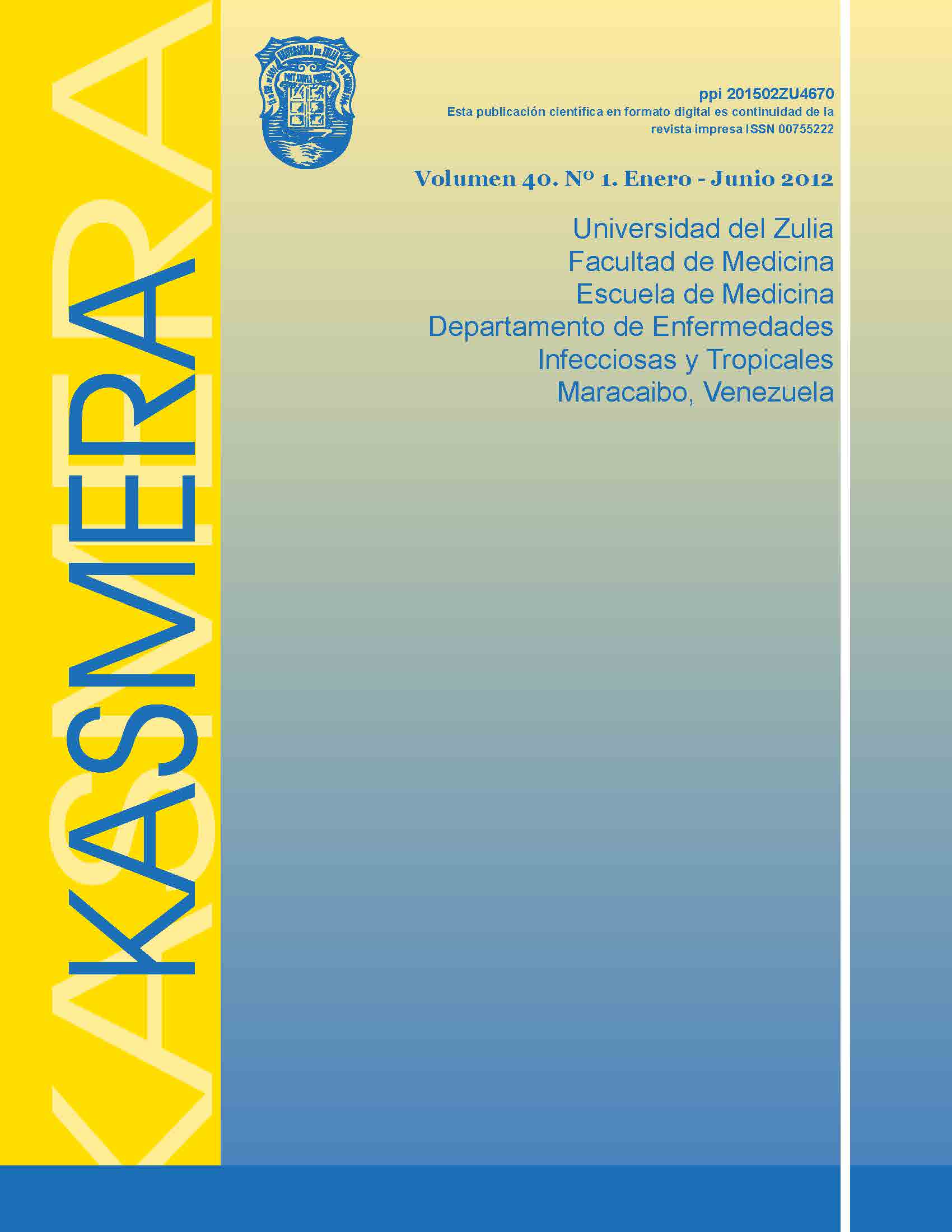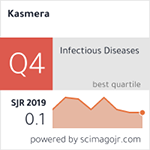Serological and Molecular Diagnosis of Human Ehrlichiosis in Patients with Clinical Manifestations Associated with the Disease in Zulia, Venezuela, 2004-2005
Abstract
Human Ehrlichiosis is a zoonotic disease transmitted to humans through the bite of dog and occasionally, deer ticks. E. chaffeensis is the most common etiological agent related to human Ehrlichiosis; however, human Ehrlichiosis can be caused by canine ehrlichias such as E. canis and E. ewingii. In 1992, in the State of Zulia, the first case of human Ehrlichiosis appeared in a 17-month-old infant, in whom antibodies against E. chaffeensis were detected. The aim of this research was to study the presence of Ehrlichia spp. infection in the serum and whole blood of 30 persons with clinical symptoms associated with the disease. This was accomplished through techniques of indirect immunofluorescence and nested polymerase chain reaction assay (nested PCR), using primers derived from the genetic sequence that codify the ribosomal RNA 16S of Ehrlichia spp., which give information regarding gender but not species; due to this, gender primers are needed that could detect Ehrlichias in any host. None of the samples in the IFI assay was positive; no antibodies for Ehrilichia spp. were in evidence. The nested PCR test did not show amplification of the target sequence. The data did not support the evidence of Ehrlichia spp. infection in the patients studied.
Copyright (c) 2012 Mirtha Castro Morales, Francisco Arocha

This work is licensed under a Creative Commons Attribution-NonCommercial-ShareAlike 4.0 International License.
Kasmera journal is registered under a Creative Commons an Attribution-NonCommercial-ShareAlike 4.0 International (CC BY-NC-SA 4.0), available at: https://creativecommons.org/licenses/by-nc-sa/4.0/deed.en; which guarantees the freedom to share-copy and redistribute the material in any medium or format and adapt-remix, transform and build from the material, provided that the name of the authors, the Department of Infectious and Tropical Diseases, Zulia´s University and Kasmera Journal, you must also provide a link to the original document and indicate if changes have been made.
The Department of Infectious and Tropical Diseases, University of Zulia and Kasmera Journal do not retain the rights to published manuscript and the contents are the sole responsibility of the authors, who retain their moral, intellectual, privacy and publicity rights. The guarantee on the intervention of the manuscript (revision, correction of style, translation, layout) and its subsequent dissemination is granted through a license of use and not through a transfer of rights, which represents the Kasmera Journal and Department Infectious Diseases, University of Zulia are exempt from any liability that may arise from ethical misconduct by the authors.
Kasmera is considered a green SHERPA/RoMEO journal, that is, it allows self-archiving of both the pre-print (draft of a manuscript) and the post-print (the corrected and peer-reviewed version) and even the final version (layout as it will be published in the journal) both in personal repositories and in institutional and databases.











_pequeño1.png)

_pequeña.png)









_pequeña.png)




_pequeña.jpg)






